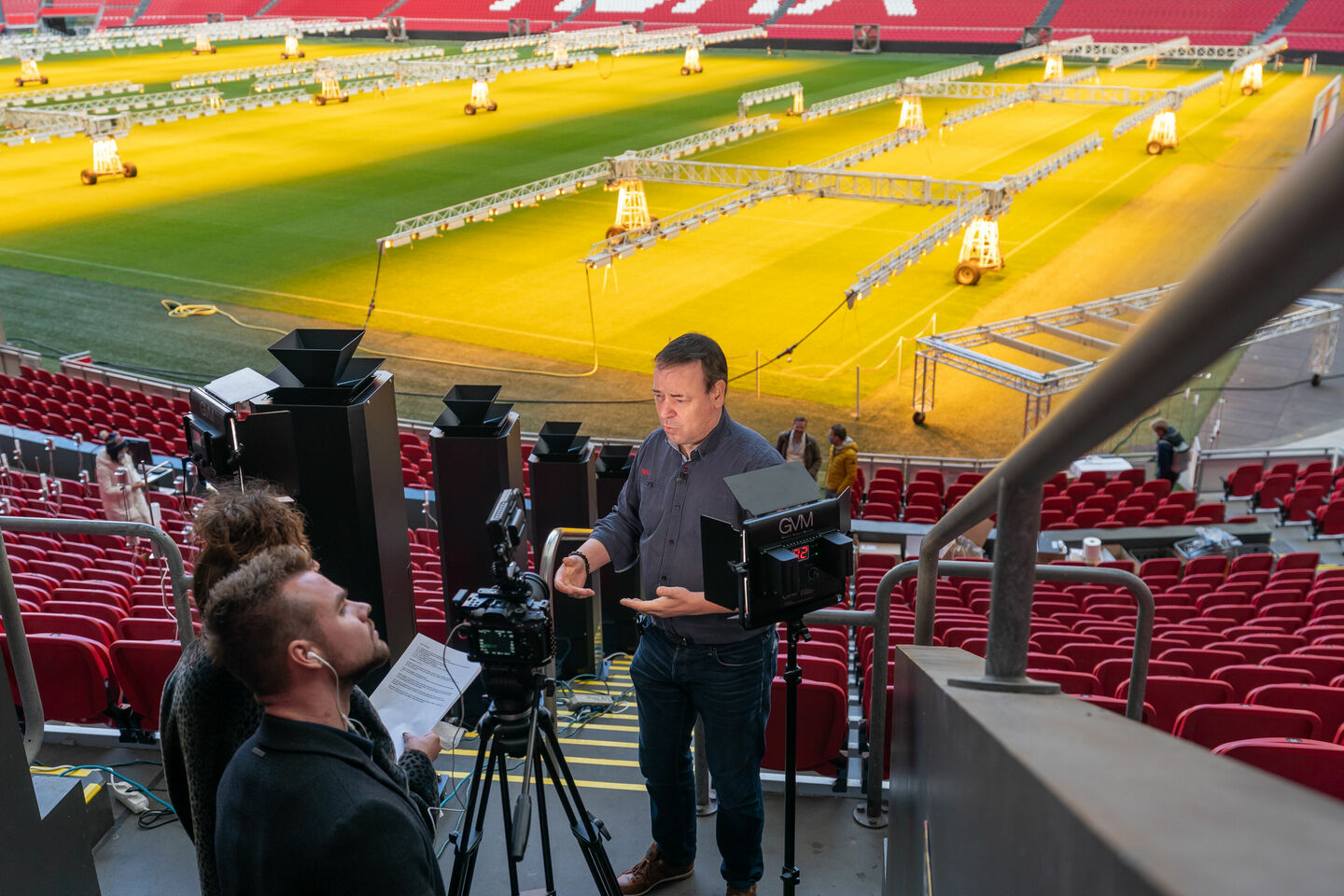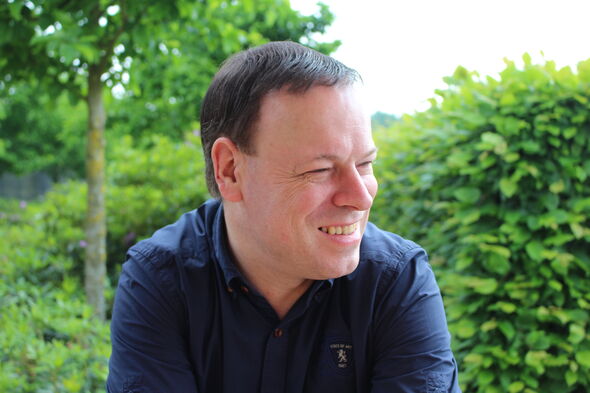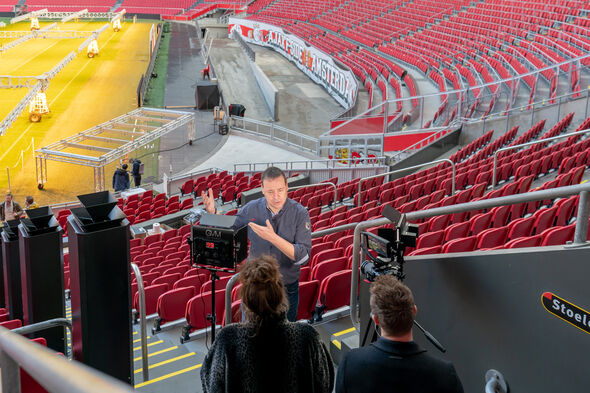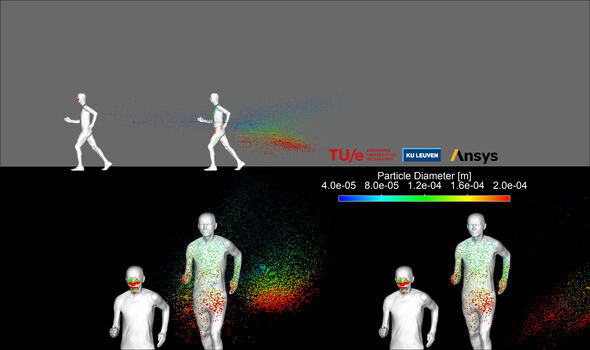
“The pandemic came too close to my own expertise”
Reluctant corona prof
Professor Bert Blocken - building physicist, wind tunnel guru, cycling fanatic - was already used to appearing regularly in the news, thanks to mediagenic projects involving cyclists in ‘his’ wind tunnel, air purification in parking garages and wind nuisance in the city. In addition to all this, last year the aerodynamics expert found himself reluctantly becoming the TU/e's ‘corona professor’.
Bert Blocken has been through a turbulent year. Just when he had promised his wife he would start taking things a little easier - the wind tunnel built on the TU/e campus on his initiative was now running smoothly -, the corona pandemic broke out. There were soon indications, initially controversial, that exhaled airborne droplets - aerosols - might play a role in the spread of COVID-19. And so the health crisis entered his field: aerodynamics.
Blocken felt compelled to join the discussion - and very quickly to involve himself in the scientific research. He appeared on radio and TV, was attacked by English-language tabloids and their readers, expressed his views on outdoor sports, gyms and ventilation systems and, in so doing, grew into the role of the ‘corona prof’ at TU/e.
All this has taken its toll on this Flemish man, in particular the media hype in April surrounding his article on the distance that runners and cyclists should be maintaining outdoors, but also criticism voiced in Belgium that he should be using his talent and efforts for the good of his fatherland. Still, the hectic year also bore him many fine fruits: Blocken was declared one of the Engineers Who Mattered in 2020 and is now leading a large national project on how larger sporting and event venues can be safely re-opened when the time comes.
It was not without hesitation that he joined the corona discussion, the professor is keen to stress from his home office in the Belgian town of Kasterlee. “But when I noticed that a lot of nonsense especially about ventilation was being claimed, by people possibly well schooled in medicine but lacking any real knowledge of building physics, I felt I had to speak out; this was too close to my own expertise. And a pandemic is by definition a multidisciplinary problem; many specialties have a piece of the puzzle to contribute.”
In the early months of the pandemic the role played by aerosols in the transmission of the virus was a hotly debated issue. If these small droplets did indeed play a key role, then the mantra of ‘wash your hands and keep a distance of 1m50’ would no longer suffice and the ventilation of indoor spaces would become vitally important. Many virologists initially ruled out the notion that aerosols could do significant harm, based on the reasoning that were that so, the effective reproduction or R number would have been higher.
Running counter to this line of thinking are the ‘super-spreader events’, countless numbers of which have now been confirmed, Blocken stresses. “With all due respect, if six hundred people attend a yodeling concert in Switzerland and half of them subsequently test positive, it is not because they all hugged each other tightly or drank from each other's glass. It's just plain common sense.”
Ten thousand tiny airborne droplets can collectively contain as much virus as one droplet that is coughed out within 1m50
Even now, opinion about the influence of aerosols remains divided. RIVM has since advised good ventilation, but does not officially view aerosols as posing a major risk. These are conflicting standpoints, Blocken points out. “But over the past year I have seen a lot of people switch camp from the non-believers to the believers. No one has swum against this tide, to the best of my knowledge. As early as June, the prominent German virologist Christian Droste stated that aerosols are the primary route of infection, and that ventilation is therefore, he believes, more important than hand-washing.”
A single airborne droplet, it is thought, probably contains too little virus to make someone sick, but a high concentration of virus-laden aerosols may form a large health risk for those present. “Ten thousand tiny airborne droplets can collectively contain as much virus as one droplet that is coughed out within 1m50. But if we can keep the concentration of aerosols low enough using ventilation or filtration, the dose will never be large enough to be infectious.”
Blocken the believer did not stop at appearing in the media - on the talk show Op1 for example - in order to inform the public about ventilation. He also published a journal article in which he set out how the gyms closed at the time could be re-opened in a safe manner. “It was picked up worldwide, after which I was approached by SportInnovator, asking whether I could set up a field test using real test subjects.”
Student Sports Centre
That experiment took place on July 11th in the gym hall of the Student Sports Centre on the TU/e campus. The aim was to investigate how existing ventilation systems can be combined with air purifiers to filter aerosols from the air. “That was a source of blood, sweat and tears, I must say, because in order to run tests involving thirty-five people during corona we needed the approval of the safety region, RIVM and our university's ethical review board, as well, of course, as a strict safety protocol. All in all, it required a great deal of preparation time. Half of my research group really did drop everything to focus on corona research.”
It turned out that the - in all other respects perfectly good - ventilation system at the sports centre was insufficiently able to keep the concentration of aerosols under control. By installing an additional two air purifiers produced by PlasmaMade, a party involved in the experiment, however, this was achieved. Blocken therefore advises against installing new and expensive, more powerful ventilation systems in other spaces, such as classrooms, and instead opting for relatively cheap air purifiers. “The main problem is the good number of cowboys still operating in the market. Over time, the purifiers they are selling fail to deliver the promised level of performance. Fortunately, European standards and certification are on the way.”
If you test twenty people, you may find that one of them exhales more aerosol particles than the other nineteen collectively
After the successful experiment in the sports center, in August the building physicist wrote a proposal for a large project, financed by the Top Sector Life Science & Health. “In this, we are taking a much broader look at how larger groups of people can eventually resume sporting activity safely. Think of, say, gyms, as well as indoor basketball and volleyball halls and even soccer stadiums.”
The first tests involved in this research into the spread of aerosols in such venues have meanwhile been completed in the Johan Cruijff ArenA in Amsterdam (drawing the attention of CNN and Fox News, among others), and experiments are also planned for Papendal (a training center for elite sports) and Maaspoort in Den Bosch (a sports hall). Not that measuring aerosol particles is an easy task by any means, Blocken stresses. “Processing the measurement data from the ArenA stadium gives me a headache; there are sometimes so many things you have to take into account. You simply can't avoid sampling smaller volumes, but then you have to ensure that these measurements are representative of the whole.”
Added to which, the spread of coronavirus in such situations is probably caused by individuals who exhale an excessive quantity of aerosol particles when they breathe, speak or sing. “If you test twenty people, you may find that one of them exhales more aerosol particles than the other nineteen collectively. And so it makes a big difference exactly which sample of the population you include in your experiment.”
Fortunately, to track the spread of artificially produced aerosols, the researchers have no fewer than one hundred and fifty measuring devices at their disposal. “These sensors normally cost about 14,000 euros apiece,” says Blocken. “But thanks to the cooperation of PlasmaMade and the young inventor Tom Koenderman and his company Cloud Garden, we are able to procure sensors for just 300 euros each. I was initially skeptical about this, but we have submitted the sensor to extensive testing in our lab and found it to be accurate. It is a godsend that we can work with these parties.”
There was also supposed to be an additional realistic experiment, held in a stadium with an entire section of the stands full of Ajax fans. “This was going to be one of the field labs that Minister De Jonge often talks about. Things were looking good until the lockdown was announced in December. It is too soon to say when this will be possible.” Nevertheless, as early as February Blocken expects to be able to release the first recommendations. “I fear, however, that these will only be adopted after we have published in a peer-reviewed journal. And in the engineering sciences, alas, this is a process that takes many months.”
Peer review for new scientific work is essential, the Flemish citizen believes. “But for work that discusses facts that basically come down to common sense peer review is pointless and means only that time is lost.” It was this that prompted him in April to share without delay his simulations of the spread of droplets during running and cycling. He wanted to explain that the logical equivalent of the 1m50 distance for runners or cyclists is some 10 or 20 meters; due to the simple fact that you are moving in the slipstream of the person in front of you. “This should be easily understandable to anyone who has ever spat into the wind, yet according to the virologists, as an engineer, I shouldn't be meddling in this. But how particles spread in air flows is uniquely the work of an engineer.”
This message went viral faster than the virus itself and I was deluged with the most awful nastiness
Criticism was heaped on Blocken because the results had not yet been published. But on social media he came under much heavier fire from, it would seem, athletes who were worried they would be banned from pursuing their hobby. “This message went viral faster than the virus itself and I was deluged with the most awful nastiness. Mainly via social media and email, but in the space of three weeks I also had about twelve unpleasant anonymous phone calls. Many of them in response to the reporting in the English-language tabloids. It's something I hope never to experience again, but it has given me a thicker skin. I have even included something about this experience in a presentation that I give regularly to Rotary Clubs in various countries.”
And then, in early January, it was evident that the aerodynamics expert had been chosen by the website engineering.com as one of the fifteen ‘Engineers Who Mattered in 2020’, alongside, among others, tech god Elon Musk. Blocken is not exactly sure how he came to be included, but all the publicity surrounding his research these past twelve months will no doubt have played a role. “It is a great honor, of course, and I feel that after that unpleasant period in April it goes some way to restoring the balance.”




Discussion